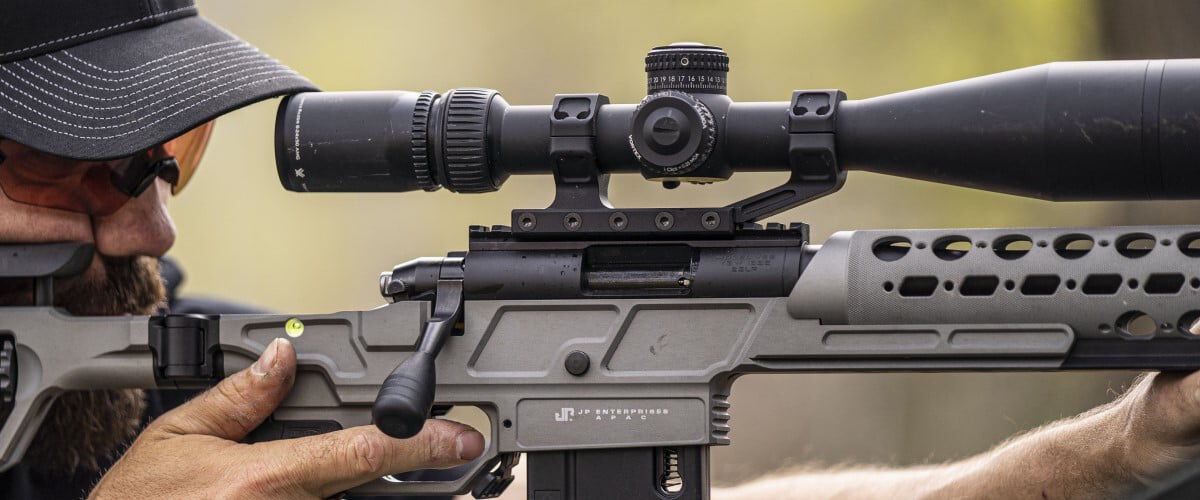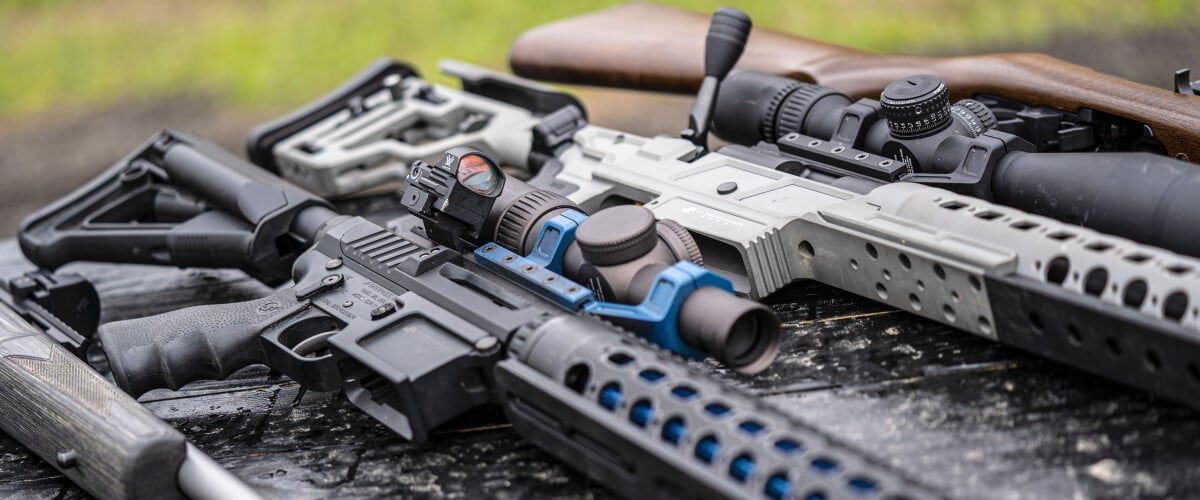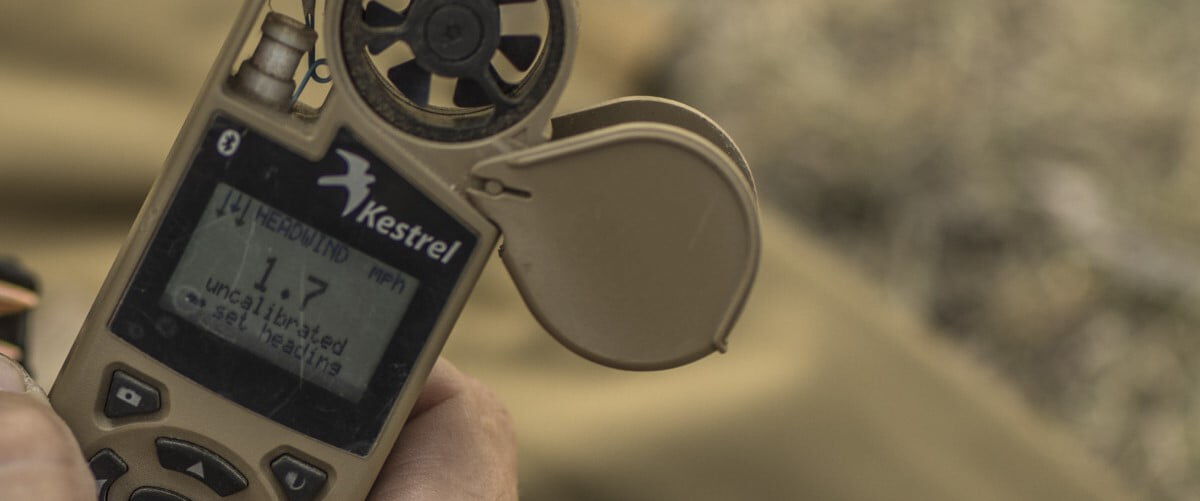
When compared to other precision shooting sports, long-range rimfire offers easy access and hours of enjoyment, so there’s little wonder why many see its appeal. Once potential stumbling block, however, occurs when prospective shooters look to build their rifle setups and acquire associated gear. CCI ambassador Todd Jarrett says some common-sense guidelines can smooth the process.
First Steps
Jarrett says the first step is deciding whether you’ll shoot a standard rifle or delve into the high end of the sport, perhaps with competition-level guns like those used by shooters in the Precision Rifle Series.
“Guns used in that sport are typically all bolt guns,” he says. “These bolt guns can vary in price from $3,000 to $6,000. The competition side is where the expense can be at. But if you just want to play on the weekends and become more proficient with your Ruger 10/22 or CZ bolt gun when shooting with your buddies, you can certainly do that.”
Whatever your choice, Jarrett says, look for a .22 with a 1:16 barrel twist, which basically means the barrel’s rifling will spin the bullet one revolution in 16 inches. Then, you should focus on how you’ll view targets.

“Whether you want to compete at a high level, shoot with your local buddies on the weekends or teach your kids how to shoot long-range with .22s, the first thing is the optics,” he says. “In the .22 rimfire competition world, they go out to 400 yards. Most people would never think the .22 can be accurate at 400, but it can.”
Sight-In Secrets
Optics options abound. No matter your choice, Jarrett says, shooters must ensure their optic has a very good mounting system. Folks who want to shoot accurately to 100 or 200 yards might be fine with a 1-minute red-dot sight. Traditional riflescopes offer better longer-range performance and come in many variations, including those with the reticle in the first focal plane and others with the reticle in the second focal plane. The main difference is how the reticle acts when the shooter adjusts the scope’s magnification.
“Most of the top guys at the top level are going with first focal plane,” Jarrett says. “Personally, I feel the first focal plane is a little superior to the second focal plane.”
Shooters will also have to decide between scopes that use Mils and those using the MOA sighting system. Mils stands for milliradians, which are measurements of an angle within a circle. Mil-based scopes have a series of dots or hash marks on either side of vertical and horizontal cross-hairs. MOA stands for minute of angle, which is also a measurement of an angle in a circle. Minutes of angle are smaller than Mils. Jarrett prefers using Mils.
Clean-22 Sub-Sonic
Clean-22’s exclusive polymer bullet coating reduces barrel fouling in the barrel and cuts lead buildup in suppressors 60 to 80 percent.
Buy Now
“Mils are an easier way to learn how to shoot distance versus MOA,” he says. Then there’s the matter of ammunition, the choice of which will greatly affect accuracy. “Ammo can be very sensitive to certain barrels, so you will have to find out how your barrel will shoot a certain weight bullet, from a 32-grain bullet up to a 40-grain bullet,” Jarrett says. “Of course, a bigger bullet can help out in wind downrange, but a lighter bullet can get you to the target faster. We generally want to test that.”
Ancilary Gear & Mods
Some critical accessories help greatly with that process. Shooters should acquire some long-range basics, such as shooting bags, a shooting mat and perhaps even a bipod. But they also need a chronograph and weather meter, such as those made by Kestrel Ballistics.
“It will tell you everything you need to know about the ballistics of your gun,” Jarrett says. “You cannot switch from one barrel to another. You will get different type of results in speed and accuracy. Having a chronograph and understanding the speed and weight of your bullet will give you the correct accuracy out to distance, along with a Kestrel, which will give you all your dope information out to 400 yards away.”

As shooters seek to improve performance, Jarret says many also adjust trigger pull. “Factory triggers can be 3 to 4 pounds,” he says. “Competition triggers can go all the way down to 4 ounces. A lot of guys use right around 1 pound on trigger pulls, and that is a highly recommended trigger weight. You will definitely see a huge difference in your accuracy because of the trigger and the trigger weight.”
Likewise, many shooters want their guns to better conform to their bodies, so they go with adjustable replacement stocks.
“These vary from $300 to $750 for various stocks,” Jarrett says. “They are very comfortable, and adjustment-wise, let you set your stock to your body. Magpul makes great replacement stocks for your Rugers and other models, like the CZ bolt guns.”
He cautions shooters that current Bureau of Alcohol, Tobacco and Firearms rules limit what you can do when building a gun, so contact a local gunsmith to make sure you adhere to those regulations.
Some rimfire shooters also consider adding a suppressor to their rifle setups. Suppressors can be fun and useful, and Jarret recommends that shooters considering one purchase a threaded barrel.
The Basics
And no matter what form your long-range rifle takes, Jarrett says simple maintenance will boost its performance and extend its life.
“It’s very important,” he says. “If you have a gun that shoots straight and then falls off, it might not be because the barrel has gone bad. It might be because you’re improperly cleaning the barrel. A 22-caliber can be extremely dirty, so it’s important to clean your barrel if you’re not going to shoot the gun in the near future.”